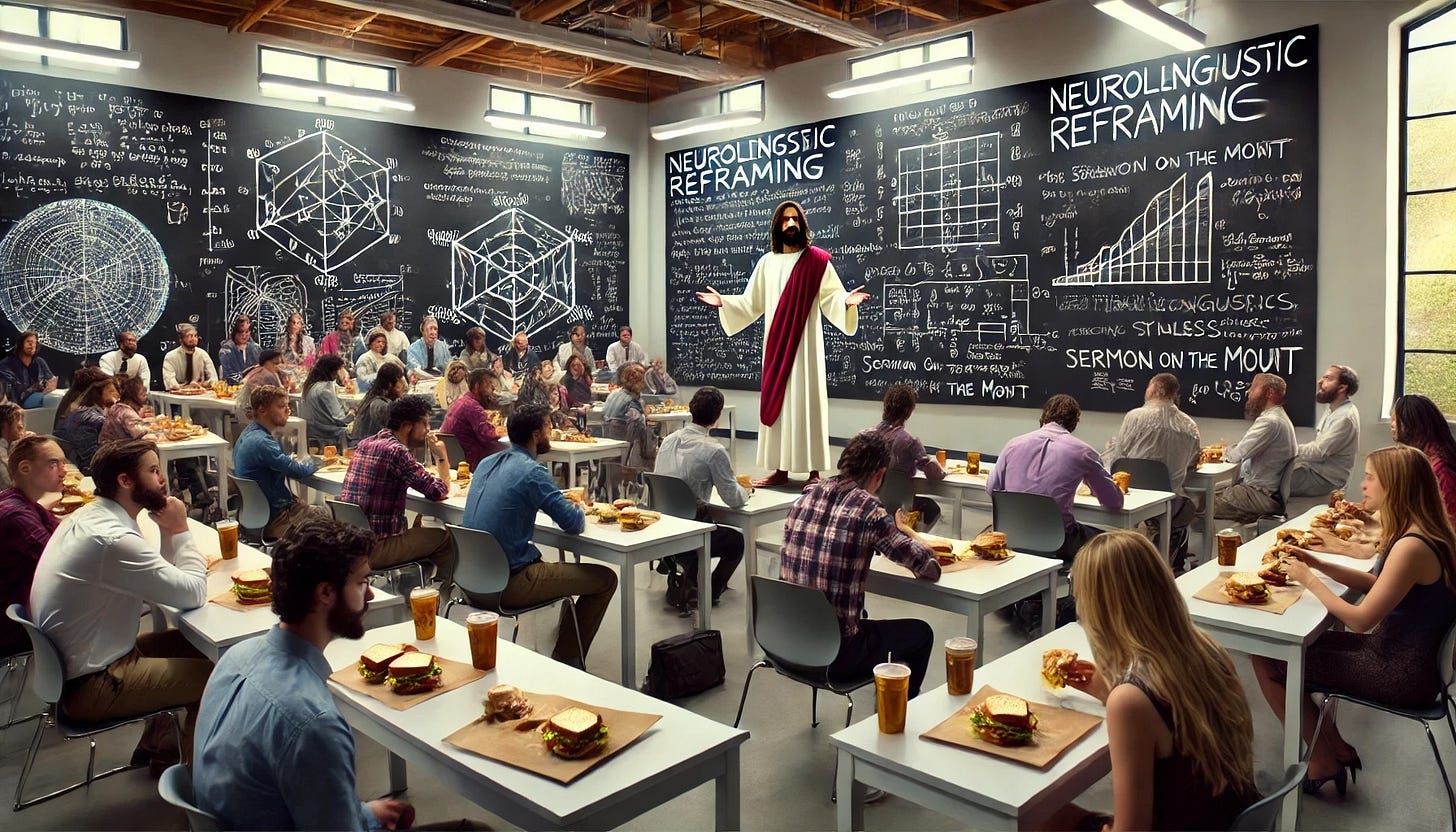The Sermon on the Mount as a Tactical Linguistic Blueprint for Thought and Speech
Beyond Rhetoric: Discern, Speak, Prevail
The Sermon on the Mount (Matthew 5-7) is often interpreted as a moral or ethical teaching, but a closer reading reveals that it is far more than that. It is a manual for rational discourse, linguistic self-defense, and alignment with truth. Jesus is not merely prescribing virtues; He is training His audience in the disciplined neurolinguistic application of logos (λόγος) and κρίσις (krises, discernment), the very methodology by which truth is known, articulated, and defended.
Thanks to the generosity of my readers, all my articles are available for free access. Independent journalism, however, requires time and investment. If you found value in this article or any others, please consider sharing or even becoming a paid subscriber, who benefits by joining the conversation in the comments. I want you to know that your support is always gratefully received and will never be forgotten. Please buy me a coffee or as many as you wish.
The meta themes of the Sermon on the Mount illuminate how Jesus provides a structured process for engaging with reality, one that counters distortion, manipulation, and reactionary thinking. Rather than a list of passive ideals, this discourse equips individuals to navigate the narrow path of disciplined reasoning while resisting both coercion and sophistry.
Sword = Λόγος (The Action of Finding Truth)
Shield = Κρίσις (Disciplined Discernment)
1. Truth as the Universal Which Can Be Known
The Sermon establishes that truth is not subjective; it can be discovered and verified through logos (λόγος) and κρίσις (krises, discernment).
Jesus’ pattern of “You have heard it said… but I say to you…” challenges distortions and requires the listener to compare claims against an observable standard.
Truth is self-evident in its effects: “By their fruits, you will know them” (Matt. 7:16) — a direct challenge to rhetorical deceptions and ideological illusions.
2. Humility as a Linguistic Discipline (Listening Instead of Reacting)
The Sermon reframes humility as an epistemic necessity — it is not about self-abasement but the discipline of listening before responding.
Example: “Blessed are the meek” (Matt. 5:5) does not mean weak submission — it means restraining reactionary impulses to engage in rational discourse.
Epistemic humility is a prerequisite for logos: The Pharisees react; Jesus teaches active listening and critical questioning.
3. Love as a Directional Attitude That Guides Logos Toward Truth
Love is not sentimentality but a directional force — it orients logos toward truth rather than manipulation.
This means rejecting sophistry, deception, and linguistic traps (e.g., Matt. 5:37: “Let your yes be yes, and your no be no”).
“Love your enemies” (Matt. 5:44) is a practical counter-strategy. By refusing reactionary hatred, one maintains control over the discourse and prevents the distortion of logos.
4. The Sermon as a Guide to Linguistic Warfare
Jesus demonstrates linguistic self-defense against distortions:
He dismantles false equivalencies (e.g., Matt. 5:21-22, equating anger with murder in intent, not in essence).
He preempts bad-faith interpretations (Matt. 7:6: “Do not cast pearls before swine” → do not engage with those who refuse to reason).
Mastery of logos and κρίσις includes knowing when not to engage — speech is a tool, not an obligation.
5. The Narrow Path as the Mastery of Logos
“Enter through the narrow gate” (Matt. 7:13-14) demonstrates the difficulty of disciplined reasoning and self-governance.
Most will follow reactive emotional reasoning, but only those who train in critical listening and alignment with truth will navigate toward freedom.
6. Judging and Being Judged (The Mirror of Discourse)
“With the measure you use, it will be measured to you” (Matt. 7:2) → The dialectical standard you apply to others will expose you if it is inconsistent.
This demands precision in language — false accusations, distortions, or double standards will eventually collapse under their own contradictions.
7. Logos as a Self-Evident Verification Mechanism
The house on rock vs. house on sand parable (Matt. 7:24-27) illustrates logos as a structural discipline:
Sound reasoning withstands scrutiny.
Sophistry collapses under exposure to reality.
Truth is self-verifying through alignment with logos, just as faulty reasoning exposes itself through contradiction.
Conclusion
By applying these principles, the Sermon on the Mount functions as a manual for rational discourse and linguistic self-defense, grounded in:
Truth as that which can be known.
Humility as a practical discipline of listening and resisting reactionary impulses.
Love is a discerned (κρίσις) directional alignment of logos (λόγος) toward truth, not manipulation.
This makes Christianity’s foundational teaching a moral doctrine and a cognitive operating system designed to align speech, reason, and action with reality.






